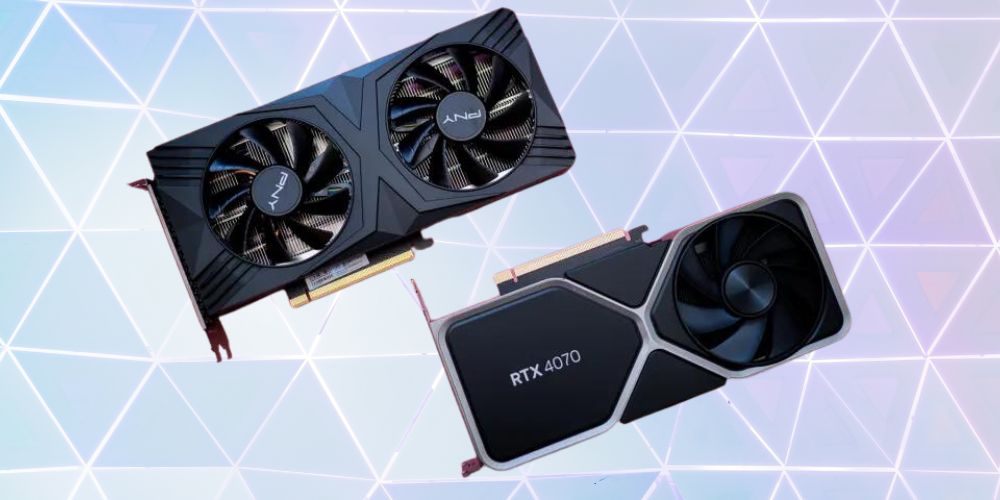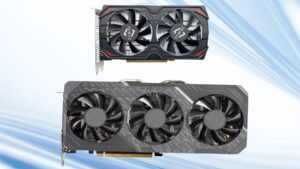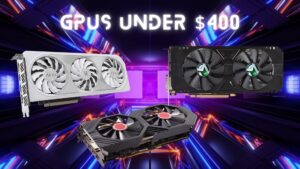Check Out The Best GPUs For Plex Transcoding
Plex is a popular media server software that allows you to organize and stream your media content to various devices. One of the key features of Plex is transcoding, which enables the server to convert media files into different formats to ensure smooth playback on your devices. Having the best GPU for Plex is crucial to achieving efficient transcoding. In this article, we will explore the best GPUs for plex transcoding and help you find the ideal GPU for your needs.
Plex transcoding involves real-time video and audio conversion, which can be demanding on your system’s resources. While your CPU plays a role in this process, a dedicated graphics processing unit (GPU) can significantly enhance the transcoding experience. Let’s delve deeper into why having the best GPUs for Plex transcoding matters.
What is Plex Transcoding?
Plex transcoding is the process of converting media files from one format to another, on-the-fly. It ensures that your media can be streamed and played back smoothly on various devices with different display capabilities and network conditions. Transcoding is especially important when your media files are not natively supported by your playback device.
Importance of Best GPUs for Plex Transcoding
A powerful GPU is essential for Plex transcoding for several reasons:
- Speed: GPUs are highly efficient at handling parallel tasks, making them perfect for real-time transcoding.
- Quality: A good GPU can maintain high-quality video and audio output during transcoding.
- Reduced CPU Load: Offloading transcoding to the GPU allows your CPU to focus on other server tasks.
Top 6 GPU Series for Plex Transcoding
Let’s take a look at some of the best GPUs for Plex transcoding:
NVIDIA GeForce RTX 30 Series Best GPUs for Plex Transcoding
Known for their powerful performance and excellent transcoding capabilities, these GPUs are a popular choice among Plex enthusiasts and one of the best GPUs for plex transcoding. The NVIDIA GeForce RTX 30 Series represents a monumental leap in GPU technology.
Featuring cutting-edge Ampere architecture, this series, including models like the RTX 3080 and RTX 3070, is a powerhouse for gaming and content creation. What sets them apart is their impressive ray tracing capabilities and AI-powered performance. These GPUs redefine gaming experiences by delivering stunning visuals, high frame rates, and real-time ray-tracing effects. They’re also highly efficient for content creators, enabling smooth 4K video editing and rendering.
For Plex transcoding, their hardware acceleration ensures seamless media streaming. With generous VRAM and powerful processing, the RTX 30 Series continues to set the bar for top-tier graphics performance, making them the go-to choice for enthusiasts and professionals alike.
Here are some of the best picks:
1. ZOTAC Gaming GeForce RTX 3060
Key Features:
- Ray tracing for stunning visuals.
- High-performance gaming.
- 12GB GDDR6 VRAM for smooth multitasking.
- Compact design for small form factor builds.
- NVIDIA DLSS for improved performance.
2. ASUS Dual NVIDIA GeForce RTX 3060
Key Features:
- Dual-fan cooling for efficient heat management.
- 12GB GDDR6 VRAM for multitasking.
- ASUS Auto-Extreme Technology for durability.
- NVIDIA DLSS for enhanced gaming performance.
- 144-hour validation for reliability.
3. MSI Gaming GeForce RTX 3060
Key Features:
- Ray tracing for realistic gaming visuals.
- Twin Frozr 8 thermal design for efficient cooling.
- 12GB GDDR6 VRAM for smooth multitasking.
- MSI Afterburner for precise overclocking.
- NVIDIA DLSS for improved gaming performance.
4. GIGABYTE GeForce RTX 3060
Key Features:
- Advanced WindForce 3X cooling for temperature control.
- 12GB GDDR6 VRAM for efficient multitasking.
- RGB Fusion 2.0 for customizable lighting.
- NVIDIA DLSS for enhanced gaming performance.
- Compact form factor for versatile system integration.
AMD Radeon RX 6000 Series Best GPUs for Plex Transcoding
The AMD Radeon RX 6000 Series represents a significant advancement in GPU technology. Comprising GPUs like the RX 6600 XT and RX 6800, this series is engineered to deliver exceptional gaming and content creation performance.
With the RDNA 2 architecture, these GPUs bring ray tracing and high-quality visuals to the forefront, rivaling their NVIDIA counterparts. Ample VRAM ensures they can tackle demanding tasks and higher resolutions, making them perfect for 4K gaming and professional applications, including Plex transcoding. The RX 6000 Series demonstrates AMD’s commitment to performance and innovation, providing a competitive alternative for those seeking cutting-edge graphics capabilities for both entertainment and productivity. Whether you’re a gamer, content creator, or server administrator, these GPUs offer remarkable power and efficiency.
To improve your gaming experience, here are some top picks to choose for best GPUs for Plex transcoding:
1. XFX Speedster SWFT 210 Radeon RX 6600
Key Features:
- Speedster MERC 319 design for efficient cooling.
- 8GB GDDR6 VRAM for smooth gaming.
- Zero DB fan mode for silent operation.
- Supports AMD RDNA 2 architecture.
- AMD FidelityFX for improved visuals.
2. PowerColor Red Dragon AMD Radeon™ RX 6800
Key Features:
- Triple-fan cooling for optimal thermal performance.
- 16GB GDDR6 VRAM for demanding gaming and tasks.
- Customizable RGB lighting.
- AMD Infinity Cache technology.
- AMD Smart Access Memory for gaming enhancements.
3. Sapphire Pulse AMD Radeon RX 6600
Key Features:
- Dual-fan cooling for efficient heat dissipation.
- 8GB GDDR6 VRAM for smooth gaming performance.
- Compact design for versatile system integration.
- AMD RDNA 2 architecture for enhanced visuals.
- AMD FidelityFX for improved gaming quality.
4. PowerColor Hellhound AMD Radeon RX 6600
Key Features:
- Dual-fan cooling for optimal thermal management.
- 8GB GDDR6 VRAM for smooth gaming performance.
- Red Devil styling for a distinctive look.
- AMD RDNA 2 architecture for enhanced visuals.
- Advanced cooling technology for overclocking capabilities.
NVIDIA GeForce GTX 1660 Super Series
The NVIDIA GeForce GTX 1660 Super Series is a mid-range graphics card that offers solid performance without breaking the bank. It’s part of the GTX 16 series and brings impressive gaming capabilities to budget-conscious gamers and is considered as one of the best GPUs for plex transcoding. With 6GB of GDDR5 VRAM and Turing architecture, it delivers excellent 1080p gaming performance, allowing you to play modern titles with high frame rates and good image quality.
Its hardware encoding and decoding capabilities make it suitable for Plex transcoding, providing efficient media streaming. While not as powerful as higher-end models, the GTX 1660 Super strikes a great balance between performance and affordability, making it a popular choice for those looking for a reliable GPU for gaming and light content creation tasks without the premium price tag.
Pick your best from the list below:
1. ZOTAC GeForce GTX 1660
Key Features:
- Compact design for small form factor builds.
- 6GB GDDR5 VRAM for smooth gaming performance.
- NVIDIA Turing architecture for efficient processing.
- Dual-fan cooling for temperature control.
- Budget-friendly gaming GPU.
2. EVGA GeForce GTX 1660
Key Features:
- Dual-fan cooling for efficient temperature control.
- 6GB GDDR5 VRAM for smooth gaming performance.
- NVIDIA Turing architecture for power efficiency.
- EVGA Precision X1 for overclocking control.
- Compact design for versatile system integration.
3. ASUS TUF GeForce GTX 1660 Super
Key Features:
- Rugged design for durability.
- 6GB GDDR5 VRAM for seamless gaming performance.
- Dual-ball bearing fans for efficient cooling.
- IP5X dust resistance for longevity.
- ASUS Auto-Extreme Technology for reliability.
4. MSI Gaming GeForce GTX 1660 Super
Key Features:
- Twin Frozr 7 cooling for efficient heat management.
- 6GB GDDR5 VRAM for smooth gaming performance.
- MSI Afterburner for precise overclocking control.
- NVIDIA Turing architecture for power efficiency.
- Compact design for system versatility.
NVIDIA GeForce GT 1030 Series Best GPUs for Plex Transcoding
The NVIDIA GeForce GT 1030 series is an entry-level graphics card designed for best GPUs for plex transcoding and budget-conscious users. It features 2GB of GDDR5 VRAM and a compact form factor, making it suitable for small form factor PCs and HTPCs.
While it may not deliver the high-end gaming performance of more expensive GPUs, the GT 1030 can handle basic gaming, video playback, and light content creation tasks. Its power efficiency and low-profile design appeal to users looking to upgrade older systems without additional power connectors. Plex transcoding offers hardware acceleration support, ensuring smooth media streaming. The GT 1030 is affordable for casual gamers and those seeking to enhance their home theatre or productivity setup without a significant investment in graphics power.
Here are some of the top suggestions:
1. MSI GT 1030 2GD4 LP OC
Key Features:
- Low-profile design for compact system integration.
- 2GB GDDR4 VRAM for basic gaming and tasks.
- Passive cooling for silent operation.
- NVIDIA Pascal architecture for power efficiency.
- Affordable GPU option for budget builds.
2. Gigabyte GeForce GT 1030
Key Features:
- Compact design for small form factor systems.
- 2GB GDDR5 VRAM for basic gaming and tasks.
- Low power consumption for energy efficiency.
- Affordable GPU for budget-oriented builds.
- Passive cooling for silent operation.
3. ZOTAC GeForce GT 1030
Key Features:
- Compact size for small form factor builds.
- 2GB GDDR5 VRAM for basic gaming.
- Energy-efficient for low power consumption.
- Budget-friendly GPU option.
- Passive cooling for silent operation.
4. ASUS GeForce GT 1030
Key Features:
- Low-profile design for compact system integration.
- 2GB GDDR5 VRAM for basic gaming and tasks.
- Silent passive cooling for noise-free operation.
- Budget-friendly GPU for cost-conscious builds.
- ASUS reliability and quality assurance.
Factors to Consider
When selecting best GPUs for Plex transcoding, consider the following factors:
1. GPU Compatibility
- Ensure that the GPU you choose is compatible with your Plex server. Check Plex’s official documentation for a list of supported GPUs.
2. Performance
- Opt for a GPU with ample performance to handle multiple transcoding sessions simultaneously, especially if you have a large user base.
3. Transcoding Capabilities
- Look for GPUs with dedicated hardware transcoding support, as they offer superior performance and quality.
Also Read…
6 Best GPUs for Optimal Plex Server Performance
Benefits of Using Best GPUs for Plex Transcoding
Using a dedicated GPU for Plex transcoding offers several significant benefits that can enhance your media streaming experience. Here are the advantages of having a dedicated GPU for Plex transcoding:
Improved Transcoding Speed:
- A dedicated GPU is designed for parallel processing, making it much faster at transcoding media files compared to a CPU alone. This results in quicker content delivery to your devices.
Consistent Playback Quality:
- GPUs excel at maintaining high-quality video and audio during transcoding. You’ll enjoy a consistent and superior viewing experience, even when streaming on various devices with varying display capabilities.
Reduced CPU Load:
- Offloading the transcoding tasks to the GPU lightens the load on your CPU. This allows your CPU to focus on other server tasks, ensuring that your Plex server can handle more simultaneous streams without performance degradation.
Simultaneous Transcoding Sessions:
- With a powerful GPU, your Plex server can handle multiple simultaneous transcoding sessions effortlessly. This is especially beneficial if you have a large user base or need to transcode content for multiple devices at the same time.
4K and High-Bitrate Content Support:
- GPUs are well-suited for transcoding high-resolution and high-bitrate content, such as 4K videos. This is crucial for delivering sharp and detailed visuals to 4K-capable devices.
Efficient Hardware Acceleration:
- Hardware-accelerated transcoding provided by GPUs is highly efficient, consuming less power compared to software-based transcoding. It helps reduce energy consumption and keeps your server running efficiently.
Support for Hardware Transcoding Standards:
- Dedicated GPUs often support hardware transcoding standards like NVIDIA NVENC and AMD VCE. These standards are specifically optimized for video encoding and decoding, ensuring smooth and efficient transcoding.
Compatibility with Plex:
- Plex is designed to work seamlessly with a variety of GPUs, making integration relatively straightforward. Plex provides support for a wide range of GPU models, both from NVIDIA and AMD.
Future-Proofing Your Plex Server:
- As media formats and technology evolve, a dedicated GPU can help future-proof your Plex server. It ensures that your server remains capable of handling new transcoding requirements without the need for frequent upgrades.
Conclusion
In conclusion, selecting the best GPUs for Plex transcoding is crucial for an optimal streaming experience. The recommended GPUs enhance transcoding efficiency, contribute to smoother playback, and improve overall server performance. The carefully curated list prioritizes factors such as speed, compatibility, and power efficiency to meet the diverse needs of Plex users. By investing in one of these top GPUs, users can ensure seamless transcoding of media files, allowing for a superior Plex server experience that caters to both quality and reliability in multimedia streaming.
FAQs
Q1. Can I use any GPU for Plex transcoding?
- A: Plex has a list of supported GPUs, so it’s best to choose from that list for optimal compatibility.
Q2. Do I need a high-end GPU for Plex transcoding?
- A: It depends on your needs. A high-end GPU is recommended for multiple simultaneous transcoding sessions and 4K content.
Q3. How do I check if my GPU is being used for transcoding in Plex?
- A: You can check the Plex dashboard to see if hardware transcoding is enabled and actively used.
Q4. What if my GPU is not on Plex’s supported list?
- A: While unsupported GPUs may work, it’s best to stick with recommended models for stability.
Q5. Can I use integrated graphics for Plex transcoding?
- A: Integrated graphics may work for light transcoding tasks, but a dedicated GPU is recommended for better performance.
Last Updated on 24 February 2024 by Ansa Imran

Ansa Imran, a writer, excels in creating insightful content about technology and gaming. Her articles, known for their clarity and depth, help demystify complex tech topics for a broad audience. Ansa’s work showcases her passion for the latest tech trends and her ability to engage readers with informative, well-researched pieces.























